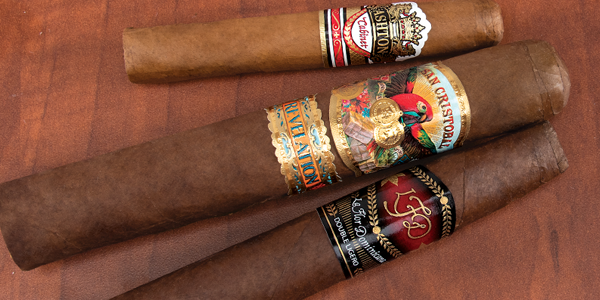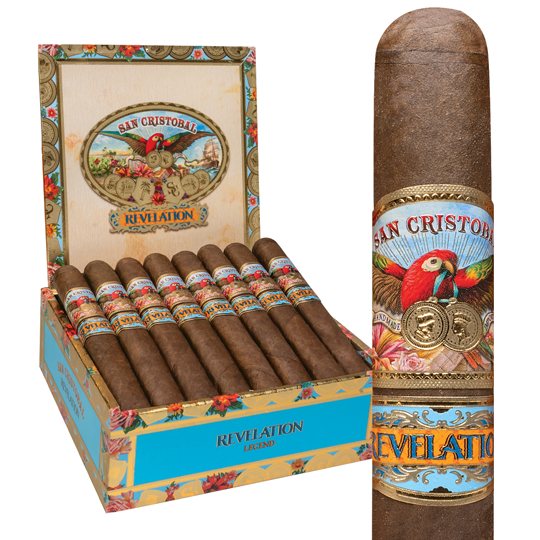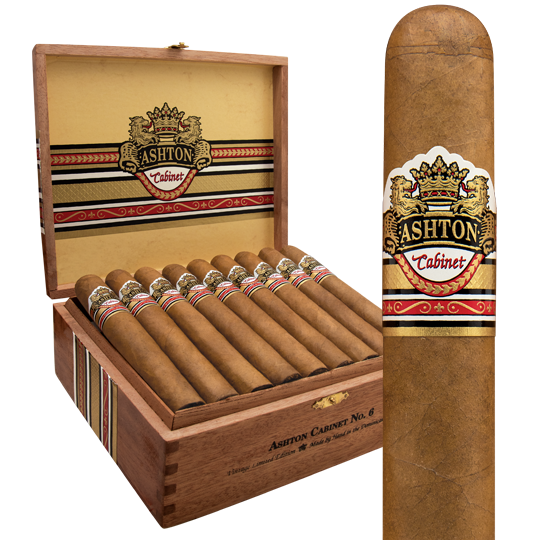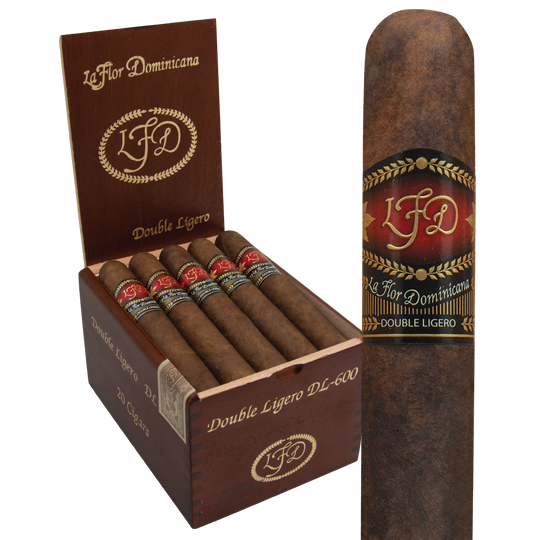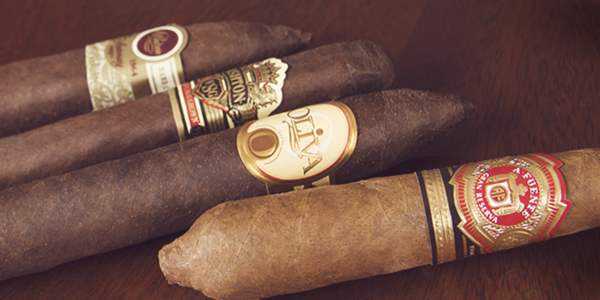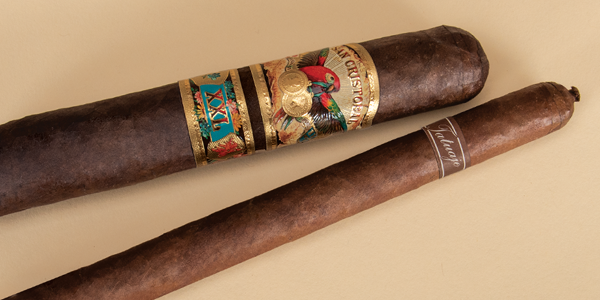How Does Cigar Size & Shape Affect Its Taste?
Cigars come in dozens of shapes and sizes. Cigar shapes can be divided into two common categories: Parejos and Figurados. A Parejo is a traditional cigar format with a flat head and consistent ring gauge from head to foot. Classic shapes like a Robusto, Toro, Churchill, and Corona are all considered Parejos. A Figurado, or a figured shape, is contoured and either one or both ends of the cigar will taper to a narrower ring gauge. The term Figurado can be applied to traditional formats like a Torpedo or more dramatic shapes like a Salomon. The ring gauge listed for a Figurado refers to the cigar’s thickest point. Arturo Fuente Hemingway Short Story, Ashton Cabinet #10, and La Flor Dominicana Andalusian Bull are all examples of excellent Figurados.
The most obvious reason cigars are rolled into different shapes and sizes boils down to the amount of time a cigar will burn. Longer, fatter cigars will burn for a longer period of time than thinner or shorter sizes. But, does the size of a cigar affect its taste? Yes – and no. A cigar’s format will influence its intensity more than its flavor profile, but it’s hard to separate them.
The Big Differences in Ring Gauge or Thickness
How hot a cigar burns depends on its thickness. How fast the heat reaches your palate depends on a cigar’s length. Thicker cigars burn slower and cooler than thinner cigars. Physics is the determining factor here, as well as the ratios between the binder, filler, and wrapper tobaccos in a premium cigar.
Not all cigars perform the same, but generally a cigar’s wrapper leaf accounts for 60% to 80% of the direct flavor you perceive in a handmade blend. That’s why a wrapper leaf is traditionally the most expensive component in a cigar. Wrapper leaves receive the greatest amount of time and attention in the fermentation and aging process, plus they must be visually pristine.
In a thicker cigar, a higher ratio of binder and filler tobaccos are used which dilutes the overall influence of flavor coming from the wrapper leaf by comparison to a thinner cigar. In a thinner cigar, the wrapper leaf accounts for a greater portion of the blend and it will deliver more intensity and taste as a result. The best way to illustrate the meaningful difference a cigar’s shape makes in its taste is to smoke one blend in a couple of different sizes.
San Cristobal Revelation provides an excellent example. The cigar is blended by Pepin Garcia from an Ecuador Sumatra wrapper leaf over a premium aged recipe of Nicaraguan binder and filler tobaccos. In the traditional Toro format, the Legend (6.25 x 52) reveals a marvelous profile of almonds, cocoa powder, black pepper, and cedar. The ultra-thick Leviathan (6.5 x 64) is made from the exact same blend, but the thicker shape will burn much slower. The tasting notes are very similar in both cigars, but the Leviathan reveals a less concentrated taste and it will burn for a longer time.
Key Differences in a Cigar’s Length
A similar difference in a cigar’s intensity is demonstrated with varying cigar lengths, but in a different way. When you light up a longer cigar, like a Churchill (7 x 49) or Double Corona (7.5 x 52), the heat from the foot of the cigar is much further away from your palate than it is with a Robusto (5 x 50), or a Petit Corona (4.375 x 42).
When the lit end of the cigar is closer to your palate, its flavor profile gets hotter faster. Ashton Cabinet #8 (7 x 49) is an iconic Churchill that delivers a creamy and nutty profile of almonds, cedar, and coffee beans with a touch of Dominican spice. The same tasting notes emerge in Ashton Cabinet Tres Petite (4.375 x 42), but with much more expediency and intensity. That’s why Ashton Cabinet #8 is ideal for an afternoon out on the golf course and Tres Petite is better suited when you’re forced to step outside in colder weather to smoke.
The Big Ring Gauge Trend
It’s hard to believe the long and slender Lancero format (7.5 x 38) experienced a serious renaissance just over a decade ago. The popularity of Lanceros has subsided, while demand for bigger and bigger ring gauges continues to grow. But, it’s proof that the popularity of cigar sizes comes and goes like any trend.
Often cigar lovers are eager to try something new. Occasionally, a cigar-maker introduces a new and innovative shape that seems like a fad, but it manages to gain a cult following and then becomes mainstream. Nub cigars are a perfect example with their short, fat 4 x 60 shapes, which initially garnered shock value on store shelves. Consumers couldn’t help but notice the unusual and chunky dimensions on Nub. Today, you can find Nub in nearly every premium cigar retailer.
Celebrated boutique cigar-maker Litto Gomez blazed a new path when he debuted his pioneering La Flor Dominicana Double Ligero Chisel format. The flattened Torpedo amplifies a profile of red and black peppers with notes of wood and earth in a concentrated finish. The Chisel has become a bestselling shape in several La Flor Dominicana blends. Experiment by smoking your favorite cigars in a variety of formats. For many cigar lovers, finding the best balance between a cigar’s blend and its shape is their favorite part of smoking.

